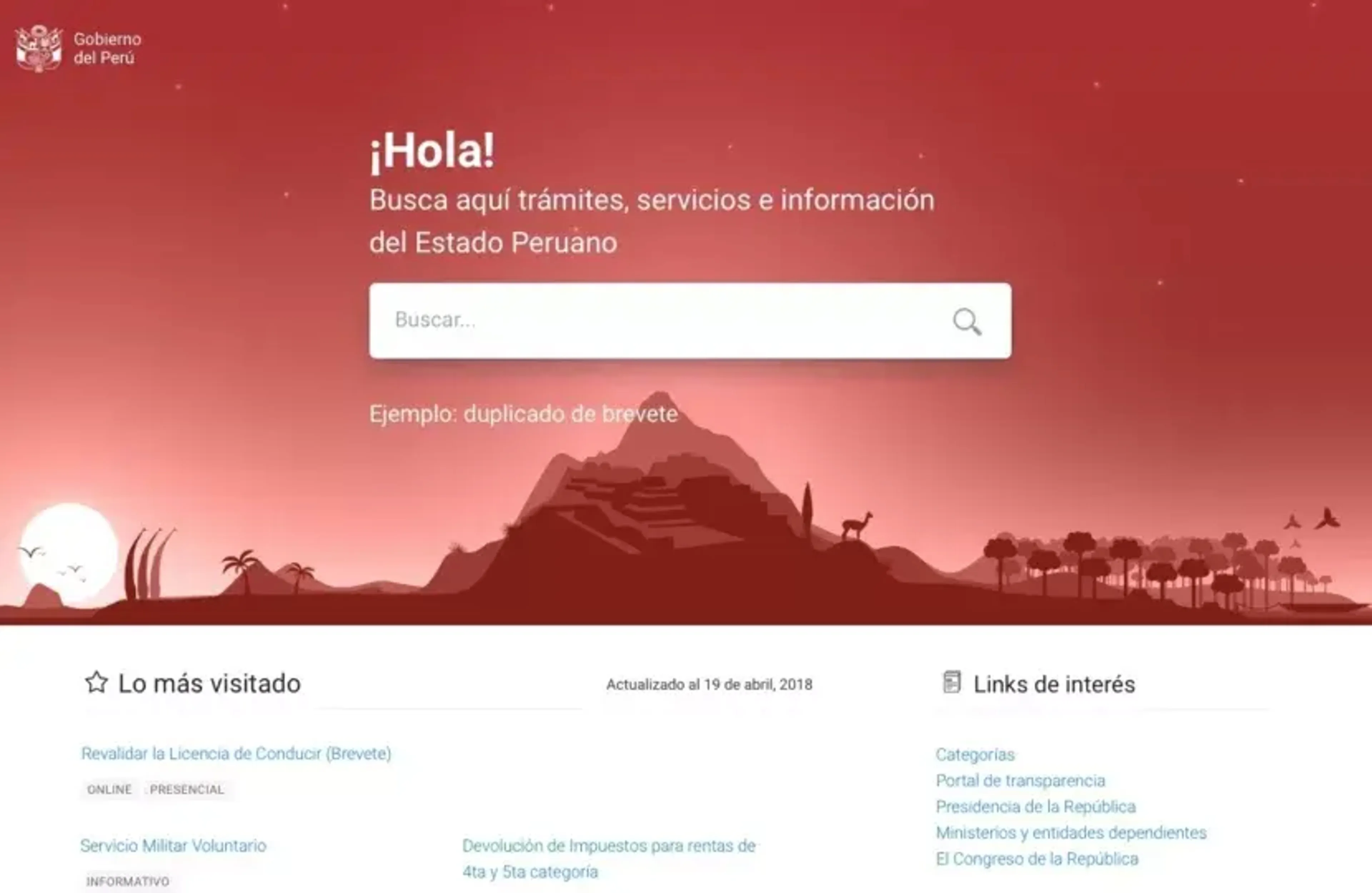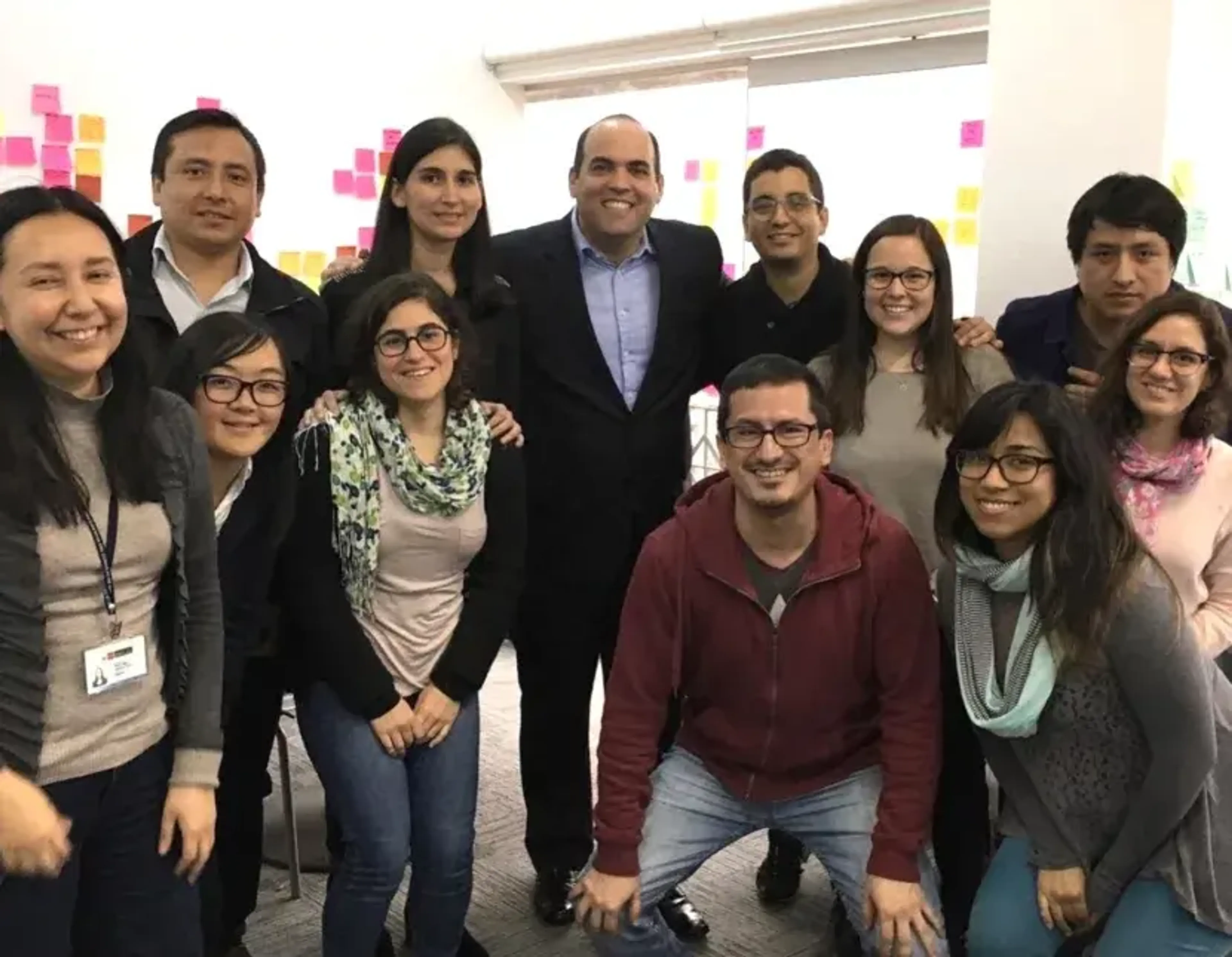
Ben Terrett
CEO and Founding Partner
Sometimes the problem isn’t building a great team, because you already have one. Sometimes it’s not showing you can deliver good things, because you’ve already done that.
Sometimes, the biggest problem is deciding where and how to focus your efforts next.
That’s what happened when we went to help a government team in Peru.


They moved exceptionally fast. They applied content design and user centered design thinking to build 100s of new pages of content. It’s not a single domain yet, so there are quite a lot of links to other websites and to pre-existing digital services. You don’t have to look at it for long to see how many ideas, concepts and design patterns it re-uses from GOV.UK and other government websites around the world.
Their website was a successful start, but the Peruvian team were unsure where to go next. Moving fast is great, but you need to keep the momentum up. When your strategy is delivery, you have to keep delivering things that matter. You have to make it meaningful. At this stage, budgets and teams are usually still quite small, but expectations and demands are high. How do you move fast, and still make a big impact?
The team had done good work on publishing, and we thought this was a good time to switch to transactions. We said as much at a meeting of the Peruvian cabinet, with the then President, Prime Minister and British ambassador present. “You need to move to transactions next,” we said. The then Minister for Transport immediately offered to help.
After that we returned to the digital delivery team led by Heidi Uchiyama and Luis Hadzich, to help them work through existing legislation to find good opportunities. Together, we found the perfect candidate: provisional driving licences.
To our amazement, the team found there was already legislation on the statute book that allowed for provisional driving licences as digital, downloadable documents. But no service had been created to make that happen.
Within 3 months, the team had put together a new provisional driving licence service. It’s relatively simple compared to anything similar in the UK, largely because the identity verification problem is already solved in Peru – everyone there has a Documento Nacional de Identidad (National Document of Identity, known as DNI for short). You have to have one of these cards in order to vote. Most people apply for one when they’re 17.
The DNI has a unique number printed on it. The card and number are already widely used for most public services, so it was simple (and importantly, easily understood and accepted by users) to ask for that number as part of the service.
Once the user has entered that number, the service automatically knows important facts about the user – such as how old they are (you have to be at least 18 to drive in Peru). It only takes a few minutes to enter your name and DNI number, then you can download your own provisional driving licence.


Politics plays a part in the work we do, and political change is part of the package. New political leaders have taken over since we were last in Lima. They’ve added their support by issuing a supreme decree (here’s an English translation), which says any public institution in Peru must “adopt the GOB.PE Platform as its only digital channel to publish information on procedures and services.”
Credit goes to Lieneke Schol, Marushka Victoria Lia Chocobar Reyes and María Soledad Guiulfo Suarez-Durand, who gave consistent backing to the team from senior positions in the Peruvian Civil Service.
We’re still working with the team and we’ll write more over the coming weeks. We’re pleased to see that they are still blogging on Medium, where you can follow their latest progress.

CEO and Founding Partner